
Pietro Grocco (27 June 1856, Albonese - 12 February 1916, Courmayeur) was an Italian physician.

Pietro Grocco (27 June 1856, Albonese - 12 February 1916, Courmayeur) was an Italian physician.
In 1879 Grocco received his medical doctorate from the University of Pavia, afterwards continuing his education in Paris and Vienna. In 1884 he was appointed director of special pathology at the University of Perugia, followed by an appointment as chair of clinical medicine at Pisa (1888).
From 1892 Grocco served as a professor in Florence, where among his many accomplishments, he founded a rabies institute. [1] In 1892 he was also named government inspector and medical director of the baths at Montecatini.
In 1902 he described "Grocco's triangle", a triangular area of paravertebral dullness on the side opposite a pleural effusion. [2] [3] His name is also associated with "Grocco's sign", defined as acute dilatation of the heart following a muscle effort. [4]
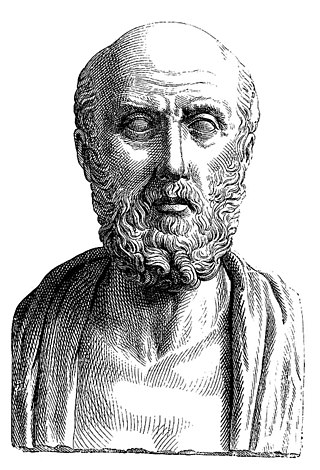
Hippocrates of Kos, also known as Hippocrates II, was a Greek physician of the classical period who is considered one of the most outstanding figures in the history of medicine. He is traditionally referred to as the "Father of Medicine" in recognition of his lasting contributions to the field, such as the use of prognosis and clinical observation, the systematic categorization of diseases, or the formulation of humoral theory. The Hippocratic school of medicine revolutionized ancient Greek medicine, establishing it as a discipline distinct from other fields with which it had traditionally been associated, thus establishing medicine as a profession.
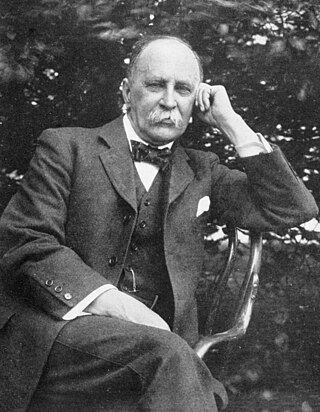
Sir William Osler, 1st Baronet, was a Canadian physician and one of the "Big Four" founding professors of Johns Hopkins Hospital. Osler created the first residency program for specialty training of physicians, and he was the first to bring medical students out of the lecture hall for bedside clinical training. He has frequently been described as the Father of Modern Medicine and one of the "greatest diagnosticians ever to wield a stethoscope". Osler was a person of many interests, who in addition to being a physician, was a bibliophile, historian, author, and renowned practical joker. Outside of medicine, he was passionate about medical libraries and medical history and among his achievements were the founding of the History of Medicine Society, at the Royal Society of Medicine, London. In the field of librarianship he was instrumental in founding the Medical Library Association of Great Britain and Ireland, the Association of Medical Librarians with three others, including Margaret Charlton, the medical librarian of his alma mater, McGill University. He left his large history of medicine library to McGill, where it continues to exist as the Osler Library.

Ferid Murad is an American physician and pharmacologist, and a co-winner of the 1998 Nobel Prize in Physiology or Medicine.

Sir William Macewen, was a Scottish surgeon. He was a pioneer in modern brain surgery, considered the father of neurosurgery and contributed to the development of bone graft surgery, the surgical treatment of hernia and of pneumonectomy.

Sir Thomas Clifford Allbutt was an English physician best known for his role as president of the British Medical Association 1920, for inventing the clinical thermometer, and for supporting Sir William Osler in founding the History of Medicine Society.

Adolf Meyer was a Swiss-born psychiatrist who rose to prominence as the first psychiatrist-in-chief of the Johns Hopkins Hospital (1910-1941). He was president of the American Psychiatric Association in 1927–28 and was one of the most influential figures in psychiatry in the first half of the twentieth century. His focus on collecting detailed case histories on patients was one of the most prominent of his contributions. He oversaw the building and development of the Henry Phipps Psychiatric Clinic at Johns Hopkins Hospital, opened in April 1913, making sure it was suitable for scientific research, training and treatment. Meyer's work at the Phipps Clinic is possibly the most significant aspect of his career.
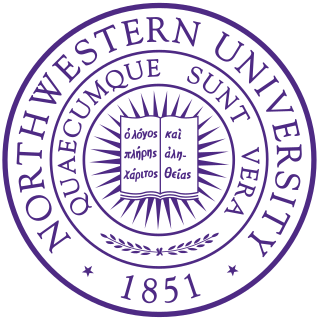
Northwestern University Feinberg School of Medicine is the medical school of Northwestern University and is located in the Streeterville neighborhood of Chicago, Illinois. Founded in 1859, Feinberg offers a full-time Doctor of Medicine degree program, multiple joint degree programs, graduate medical education, and continuing medical education.

Sir William Henry Broadbent, 1st Baronet was an English neurologist who was a leading British authority in the field of cardiology as well as neurology. He also performed research involving diseases such as tuberculosis and cancer. In 1881 he was elected President of the London Medical Society and in 1887 President of the Clinical Society of London. Broadbent was a Physician-Extraordinary to Queen Victoria and Physician-in-Ordinary to King Edward VII and the Prince of Wales.

Albrecht Ludolf von Krehl was a German internist and physiologist who was a native of Leipzig. He was the son of Orientalist Christoph Krehl (1825–1901)

Giuseppe Moscati was an Italian doctor, scientific researcher, and university professor noted both for his pioneering work in biochemistry and for his piety. Moscati was canonized by the Catholic Church in 1987; his feast day is 16 November.

Helen Flanders Dunbar — later known as H. Flanders Dunbar — is an important early figure in U.S. psychosomatic medicine and psychobiology, as well as being an important advocate of physicians and clergy co-operating in their efforts to care for the sick. She viewed the patient as a combination of the psych and some, body and soul. Both needed to be treated in order to treat a patient efficiently. Dunbar received degrees in mathematics, psychology, theology, philosophy, and medicine. Dunbar founded the American Psychosomatic Society in 1942 and was the first editor of its journal. In addition to running several other committees committed to treating the whole patient, Dunbar wrote and distributed information for public health, involving child development and advocating for mental health care after World War II.
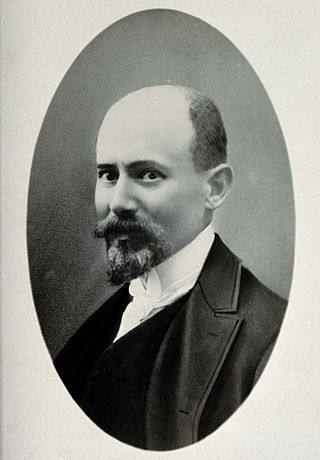
Alessandro Codivilla was an Italian surgeon from Bologna and head of the surgical department of the hospital of Castiglion Fiorentino, known for his work in orthopaedics and first describing the pancreaticoduodenectomy.
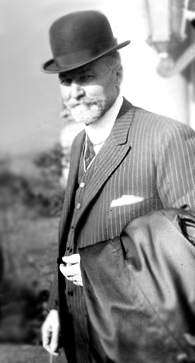
John Benjamin Murphy, born John Murphy was an American physician and abdominal surgeon noted for advocating early surgical intervention in appendicitis appendectomy, and several eponyms: Murphy’s button, Murphy drip, Murphy’s punch, Murphy’s test, and Murphy-Lane bone skid. He is best remembered for the eponymous clinical sign that is used in evaluating patients with acute cholecystitis. His career spanned general surgery, orthopedics, neurosurgery, and cardiothoracic surgery, which helped him to gain international prominence in the surgical profession. Mayo Clinic co-founder William James Mayo called him "the surgical genius of our generation".

Johann Peter Frank was a German physician and hygienist.
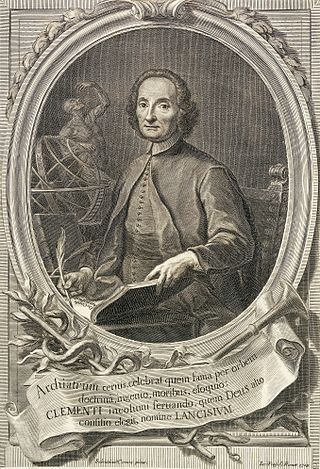
Giovanni Maria Lancisi was an Italian physician, epidemiologist and anatomist who made a correlation between the presence of mosquitoes and the prevalence of malaria. He was also known for his studies about cardiovascular diseases, an examination of the corpus callosum of the brain, and is remembered in the eponymous Lancisi's sign. He also studied rinderpest during an outbreak of the disease in Europe.

Antonio Cardarelli was an Italian physician remembered for describing Cardarelli's sign.
Ray Fletcher Farquharson was a Canadian medical doctor, university professor, and medical researcher. Born in Claude, Ontario, he attended and taught at the University of Toronto for most of his life, and was trained and employed at Toronto General Hospital. With co-researcher Arthur Squires, Farquharson was responsible for the discovery of the Farquharson phenomenon, an important principle of endocrinology, which is that administering external hormones suppresses the natural production of that hormone.
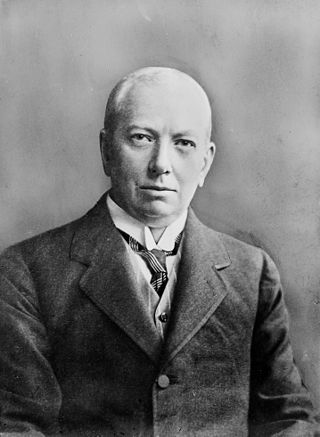
George Alexander Gibson FRSE FRCPE was a Scottish physician, medical author and amateur geologist. As an author he wrote on the diverse fields of both geology and heart disease. The Gibson Memorial Lecture is named after him. He was the first to discover a heart condition – the Gibson Murmur – which is named after him.
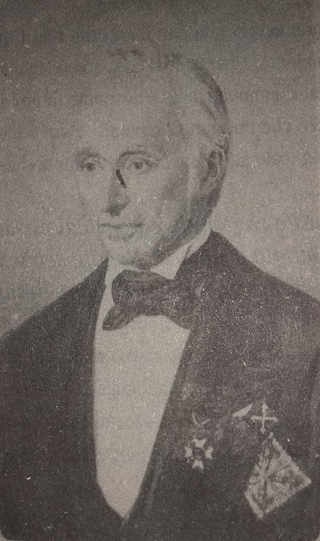
Pietro Ramaglia (1802-1875) was an Italian physician and surgeon. He is considered one of the leading figures in the history of medicine in Molise and of the neapolitan medicine of his time. Indeed, he was one of the most important doctors of the Kingdom of the Two Sicilies, being the personal physician of the King Ferdinand II of the Two Sicilies. In medicine he was one of the proponents of the experimental anatomo-clinical method and founder of the Neapolitan positive-naturalistic school that opposed the vitalist theories then in vogue and supported in Milan by Giovanni Rasori and in Bologna by Giacomo Tommasini with his "New Italian Medical Doctrine".

Thomas Kennedy Dalziel, known as T Kennedy Dalziel, was a Scottish surgeon and pathologist who specialised particularly in abdominal surgery. Dalziel was most notable for being considered the best technical surgeon at the time in western Scotland. He was also particularly notable for the discovery of a disease called chronic interstitial enteritis in 1913, that later became known as Crohn's disease.